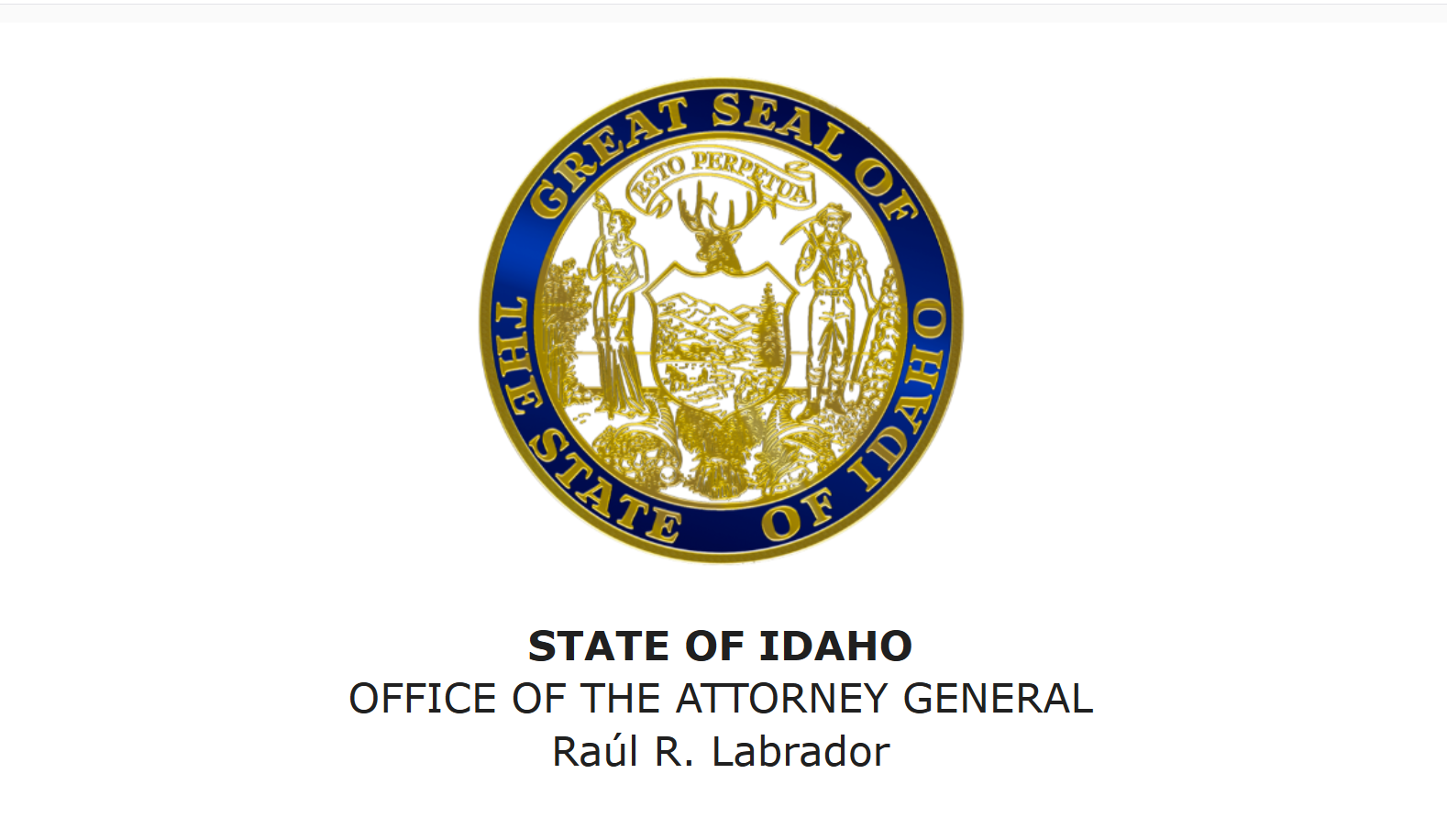by David Erlanson, Sr. of Swan Valley, Idaho
Editor’s Note: David Erlanson Sr. vs. Environment Protection Agency, writ of mandamus to SCOTUS, case number 23-949, in the Ninth Circuit Court of Appeals, case number 22-35894 is now on the SCOTUC docket. The EPA has submitted a waiver of response for the government. Ordinary citizens like David who spend years battling corrupt government entities through a labyrinth judiciary system deserve our highest regard and admiration.
It is time we will delve into case law, primarily from the Supreme Court of the United States (SCOTUS) and continue on with a more expansive discussion of Congressional legislation. We will also continue our discussion dealing with personal correspondence I received from the Idaho Department of Water Resources on July 2, 2008. Furthermore, I will show documented proof that the United States Forest Service (USFS) blatantly disregards our Constitutional system by violating decisions reached by SCOTUS. I have attached a document from the Buffalo Ranger District in the State of Wyoming where I am a frequent visitor.

Let’s briefly rehash what we have already discussed in this series. In Part I, we discussed our four founding documents and their relationship to our topic of water. Further, we briefly mentioned the general welfare clause, which we will now dispute with case law. Additionally, we touched on State Sovereignty and the Tenth Amendment, and we will enlarge our discussion with this issue as this pertains to who really owns the water. In Part II, we mentioned two pieces of Congressional Legislation and how those Acts gave administrative authority over the water resources to the States, particularly those States on or westward of the 98th meridian. We discussed not only the United States Environmental Protection Agency, but also the land management agencies, those being the USFS and the Bureau of Land Management (BLM).
So folks, let’s continue our investigation on the topic of water.
First, let us resolve the general welfare issue. Although the general welfare clause is listed in the Preamble of the Constitution, a SCOTUS case CAHA v. United States, 152 U.S. 211 (1894) states, “Generally speaking, within any State of the union the preservation of the peace and the protection of person and property are functions of the State Government and are no part in, at least, of the Nation.” After reading this quote, the reader must form an opinion. The question is, do you believe that your State or the United States Federal Government has the primary duty as to your general welfare?
One of the most monumental cases concerning our topic today is the SCOTUS case Pollard’s Lessee v. Hagan, 44 U.S. 212 (1845). The verbiage within the opinion is a monumental admonition as to what entity, State or Federal Government, owns and controls the navigable water. “The shores of navigable waters and the soils beneath them, were not granted by the Constitution to the United States, but were reserved to the States respectively, these States enjoying rights, sovereignty and jurisdiction over the water as the original States.” Remember folks, the definition of navigable waters under the Clean Water Act section 502 (7) equates to waters of the United States (WOTUS). Considering this definition, the Submerged Land Act of 1953, the Act of July 23, 1955 – Surface Resources Act, and this Supreme Court case, it would seem inconceivable how any agency of the United States Government can exercise administrative jurisdiction over the navigable waters.
The reader must keep in mind that the Commerce Clause of the Constitution gives full authority to any agency regulating the act of commerce. The Commerce Clause should not be construed to extend authority over the area in which that commerce is conducted, which in many instances is private property. In order to cement this issue of State control over the water, I offer to you 43 U.S.C. § 666, also known as the McCarran Amendment. One result of this amendment is that the United States waived sovereign immunity concerning the ownership or management (management meaning administrative jurisdiction) over the water in favor of the States. A further example would be the Organic Act of 1944, which provides for interactions between the Federal Government and the States concerning acquisition of State water rights by National Forests located within their boundaries. This begs the question; why would the federal government seek water rights if they already owned them?
Let us now turn our attention to the United States Environmental Protection Agency (EPA) for a more detailed discussion. The Clean Water Act (CWA) of 1972 was an extension of the Federal Water Pollution Act of 1948. The enforcement of the CWA was delegated to two administrative agencies, one being the EPA and the other being the US Army Corps of Engineers. Both of these entities were tasked with defining the Waters of the United States (WOTUS); not by Congress, but through a sub-delegation of authority given to unelected bureaucrats, something that “we the people” did not set forth in the Constitution.
This unconstitutional delegation of authority was addressed in a SCOTUS case in 1928 called the J.R. Hampton Case, whereby SCOTUS added to the language in our nation’s Constitution. No longer did Congress only enjoy vested and enumerated rights. According to the Supreme Court in 1928, they now had “implied” rights from which to govern. So the high court allowed Congress to create agencies ad nauseam and entitle them with the power to make rules and regulations which bind citizens to obligations. The end result is the same as a legislative statute or law of which citizens must obey or suffer punishment. In order for Congress to task an agency to make rules and regulations concerning a Congressional action, the court determined that a guiding “intelligible principle” must be given to the agencies as to the parameters of their permissible jurisdiction. This is where the EPA and the Army Corps of Engineers fall short as they were tasked to define the parameters of their own jurisdiction which rightly belongs to Congress.
In a more simple explanation, these two agencies were tasked with defining what constitutes Waters of the United States (WOTUS). This is not the job of an agency, this is the job for elected officials. How does an administrator (a singular, unelected individual) have the absolute power to define a national rule component which directly affects over 300 million people? Since 1972, the definition of WOTUS has been altered, as near as I can tell, over two dozen times.
How does the citizen keep abreast of such a vague and indeterminate definition? This results in continual litigation and punishment being doled out by federal agencies exerting authority over State resources. Not only do these agencies make their own rules and regulations to suit their agenda, but they punish American citizens for violating these rules and regulations regarding the use of water. The EPA gains its authority from the Commerce Clause, but the Commerce Clause has its limits. One of the most important is that an agency under the Commerce Clause authority cannot commandeer a State regulatory program.
At this time, please refer to a personal letter from the State of Idaho Department of Water Resources to Dave Erlanson, Sr. dated July 2nd, 2008. Here you will see where the EPA, in 2008, was commandeering a State regulatory agency which impaired its administrative duties. Read it for yourself. As you read further in this correspondence, you will see where the State of Idaho Department of Water Resources states that they will work with the USFS to get my stream alteration permit approved. The problem here, folks, is that the USFS has no jurisdiction over the water in Idaho.

Continuing on with the USFS and BLM, I have scanned a document titled “South Fork Clearwater River 2020.” It is very obvious that the BLM and the Nez Perce Clearwater National Forest are making rules and regulations pertaining to the waters of Idaho where they do not enjoy that authority. We must now take a look at the Desert Land Act of 1877. This Act enabled a severance of the water on the public domain from riparian interests or titled properties, additionally the Reclamation Act of 1902 authorized the State, in which waters are located, to acquire funds for irrigation projects. These laws point in only one direction.

Let’s turn our focus from legislative actions to case law. We have discussed the navigable waters at length and now it’s time we will turn our attention to the non-navigable waters, which includes all ground and surface waters within a State.
In the Supreme Court case California Oregon Power Company vs. Beaver Portland Cement Co., 295 U.S. 142 (1935), we find exactly what we are looking for. Stated in the syllabus, it reads “Water rights acquired in the so-called arid and semi-arid States and Territories by the application of the non-navigable waters on the public domain to beneficial uses in accordance with local rules, customs, laws, and judicial decisions were recognized and secured by the Act of July 26, 1866, § 9, the amending Act of July 9, 1870, § 17, and the Desert Land Act of 1877. P. 295 U.S. 154.
The court held that the effect was to sever all waters upon the public domain not to therefore appropriated from the land itself and that a patent issued thereafter for land in a desert land State or Territory under any of the land laws of the United States carried with it, of its own force, “no common law right to the water flowing through or bordering upon the lands conveyed.”
A fair construction of the provisions of the Desert Land Act is that the land should be patented separately and that all non-navigable waters thereon should be reserved for the use of the public under the laws of the States and Territories named. So folks, what this means is that all non-navigable waters on the public domain are subject to the control of the States or those Territories.
At this point in our discussion, a question has to be raised – why does the State of Idaho via its elected officials acquiesce to federal agencies administration over our most precious resource, water? This relinquishment of authority to federal agencies is contrary to our state water plan which states, “Any action by the Federal Government that would impair Idaho’s sovereignty over its water resources is against State policy.” So what compels the Idaho Department of Water Resources and the Idaho Department of Environmental Quality, as well as the Idaho Department of Lands, to operate contrary to our state water plan?
Let’s remember that in Part II, we discussed the proprietorial jurisdiction of the land management agencies, we will now add some pertinent case law to the discussion.
Salopek v. Mimbres Valley 564 P.2D 615 (1977), was a case brought before the Supreme Court of New Mexico and it mentions the purposes for which national forests may be established under the Organic Act of 1897, section 475. “No public forest reservation shall be established, except to improve and protect the forest within the reservation, or for the purpose of securing favorable conditions of water flows and to furnish a continuous supply of timber for the use and necessities of citizens of the United States; But it is not the purpose or intent of these provisions or of the act providing for such reservations, to authorize the inclusion therein of lands more valuable for the mineral therein, or for agricultural purposes, than for forest purposes.”
Millions of acres of lands more suited for mineral development are still considered public lands under federal control. Why? Furthermore, within the document it states, “All waters on such reservations may be used for domestic mining, milling, or irrigation purposes under the laws of the State wherein such forest reservations are situated, or under the laws of the United States and the rules and regulations established there under.”
Folks, what we have here are two separate issues – the land issue and the water issue. It clearly states that the water issue is under the jurisdiction of the laws of the State, even though that water flows through national forest or BLM properties. Remember in Part II, we discussed the administrative jurisdiction Category 4, which prohibits the USFS and BLM from making rules and regulations not pertaining to the protection of the property.
Furthermore, any lands found to be mineral in nature must be withdrawn from the public lands which the USFS is tasked to administer. Conclusion: the USFS has no authority to interfere with mining or make rules and regulations pertaining to the use of the water by miners. But they do, and Idaho agencies assist them. By such things as memorandums of understanding which diminishes Idaho Sovereignty and enhances the powers of the Federal Government.
The final case that we will discuss is New Mexico v. The United States (USFS), 438 U.S. 696 (1978). In this case, the USFS relied on the Multiple Use Sustained Yield Act of 1960, which provides that it is the policy of Congress that the National Forests shall be established and be administered for outdoor recreation, range, timber, watershed, and wildlife and fish purposes.
The court disagreed stating, “That the purposes of sections of 528-531 of this title are declared to be supplemental to, but not in degradation of, the purposes for which the National Forests were established as set forth in the Organic Act of 1987.”
The New Mexico ruling by SCOTUS said that, “The Multiple Use Act of 1960 does not have a retroactive effect, nor could it broaden the purposes for which the Gila National Forest was established under the Organic Act of 1987.” It goes on to say, “The court agrees that Congress did not intend to thereby expand the reserved rights of the United States.”
The reader should refer to this case and read it in its entirety, as it is an absolute win for State water rights on or through USFS properties. Conclusion: the USFS has no administrative jurisdiction over the water.
In reference to the 1960 Multiple Use Act, please refer to the Buffalo Ranger District information sheet from 1968, which shows that from 1960 to1978, when New Mexico was adjudicated, the USFS operated as if they had the authority and jurisdiction to promote policies over recreation, range, timber, watersheds, wildlife, and fish. This means that they made rules and regulations pertaining to these conditions. Which, of course, in 1978 under New Mexico, SCOTUS held that they did not enjoy that power.
This then begs the question – after the New Mexico case did the USFS repeal those regulations and rules? I think not, my friends.
There may arise in one’s mind this question – What does a ruling about a national forest in New Mexico have to do with a national forest in Idaho? The answer is that whatever law or statute is applicable to one forest concerns all forests.
Folks, we all make mistakes and that includes the United States government. One of the most glaring examples is that from 1951 until 2013 the Department of Interior in their required yearly report to Congress told Congress the federal properties were under exclusive administrative jurisdiction, when in fact they were under Category 4 proprietorial interest only. This led to a host of laws being passed where Congress exceeded their authority much to the chagrin of States in which these properties were located. Ask yourself this – were those laws and statutes ever repealed? If not, why not?
I hope I have opened your eyes to who really owns the water. All factual evidence and case law was presented to the best of my ability and knowledge concerning the water in Idaho. Thank you for reading and being engaged in this important topic. Your continued engagement on important issues concerning this country, as well as Idaho, will ensure both survive for generations to come.
Readers are welcome to gain additional information by following my two cases:
- Dave Erlanson vs. USFS and BLM, #4:24-CV-00023 BLW.
- David Erlanson Sr. vs. Environment Protection Agency, writ of mandamus to SCOTUS, case number 23-949, in the Ninth Circuit Court of Appeals, case number 22-35894.
As I am a pro se litigant in both actions listed above, any involvement via a pro bono attorney would be much appreciated, as with any comments or factual information. You can contact me through this media outlet.







